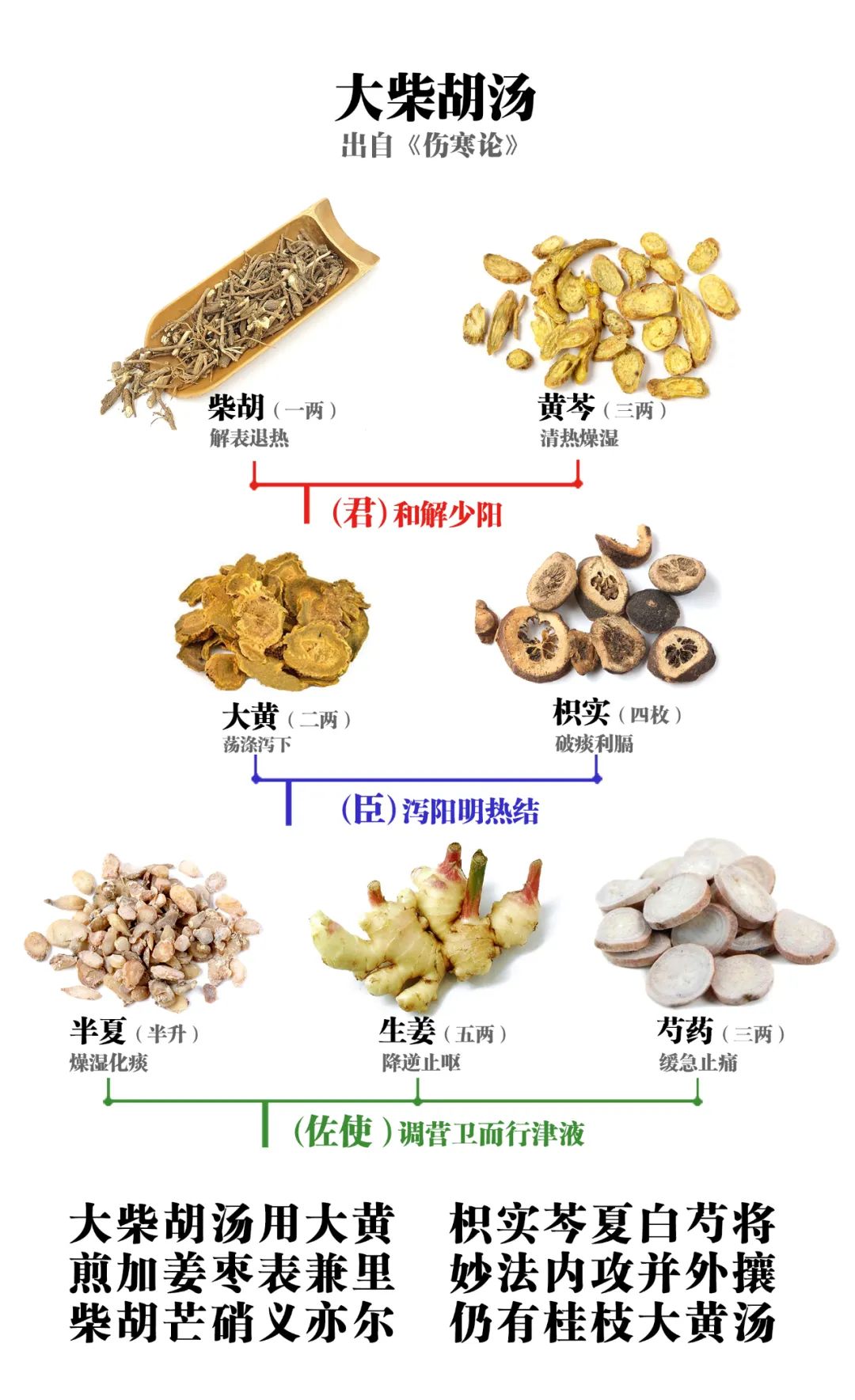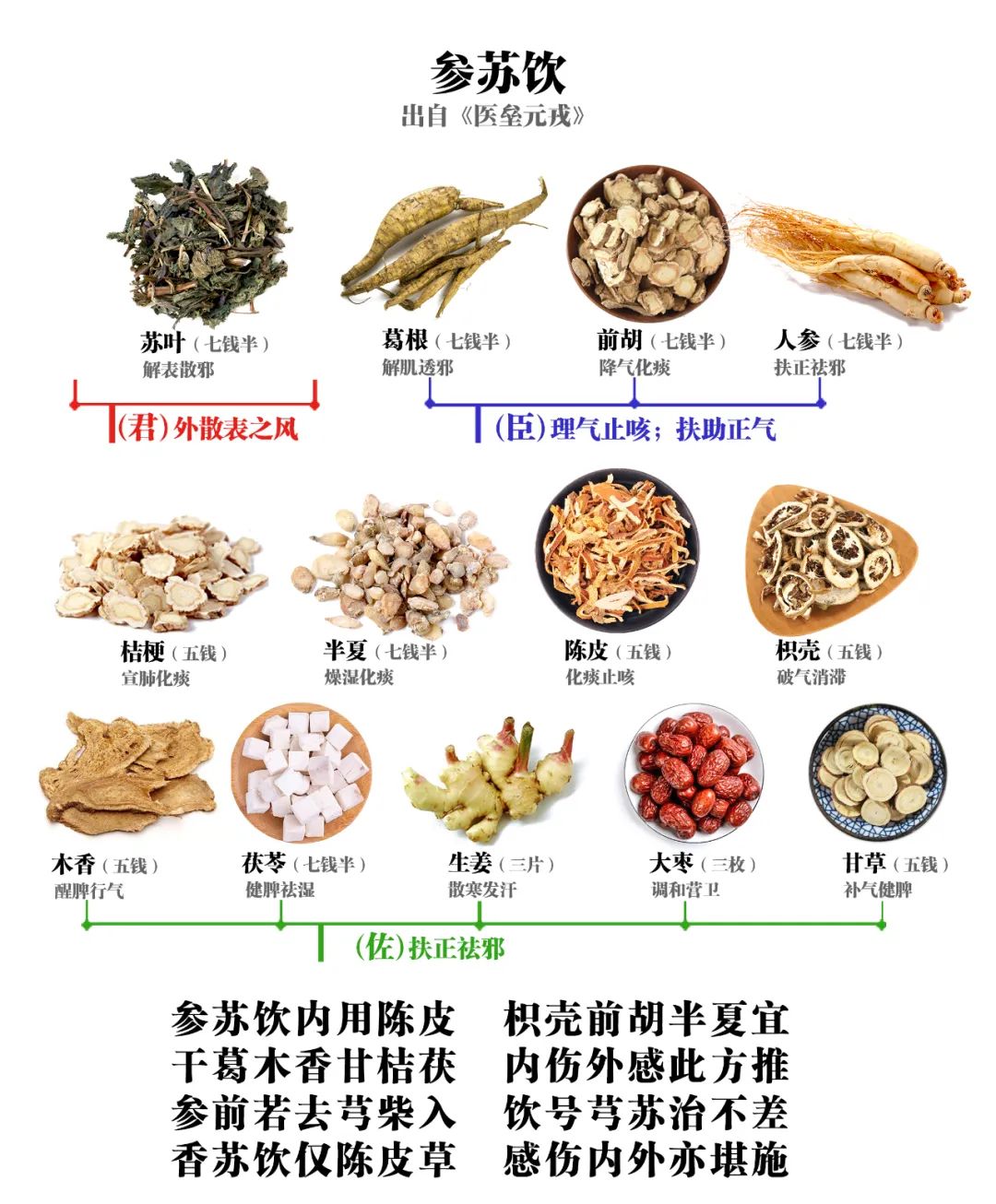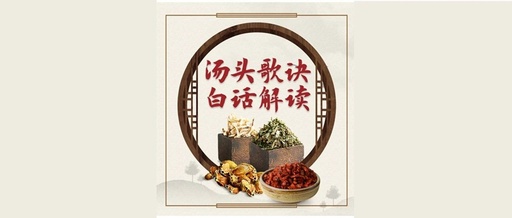Song of Decoction Interpretation
Dear young practitioners of Traditional Chinese Medicine (TCM):
This week, we are reciting and studying the formula for “Exterior and Interior Formulas“.
As everyone knows, “exterior” and “interior” are two different concepts. The exterior is on the outside, while the interior is on the inside; to treat the exterior, we often use sweating methods, and to treat the interior, we often use purging methods.
So, does this formation named “exterior and interior” combine the strengths of bothexterior treatment and interior treatment?
That’s right!
This formation both releases the exterior and attacks the interior, integrating the multiple wisdoms of the previously learned “Exterior Releasing Formulas”, “Interior Attacking Formulas”, and “Harmonizing Formulas”.
Let us delve into—
01
Da Chai Hu Tang
Da Chai Hu Tang uses Da Huang Zhi Shi Qin Xia Bai Sha Jiang
Jian Jia Jiang JiaoBiao Jian Li MiaoFa Nei GongBing Wai Rang
Chai Hu Mang Xiao Yi Yi Er Reng YouGui Zhi Da Huang Tang

Since it is named after Chai Hu, it indicates that Chai Hu plays a crucial role in this formation.
We know that Chai Hu is a VIP of the Shao Yang meridian, able to pass through areas that other herbs find difficult to access. Therefore, when an external pathogen enters the Shao Yang meridian, Xiao Chai Hu Tang (Minor Bupleurum Decoction) is a commonly used and effective method to expel pathogens. However, when an external pathogen enters both the Shao Yang and Yang Ming meridians, relying solely on Xiao Chai Hu Tang will be insufficient.
What should we do? The esteemed Zhang Zhongjing created Da Chai Hu Tang (Major Bupleurum Decoction) based on this formation.
Da Chai Hu Tang, as the name suggests, is more powerful than Xiao Chai Hu Tang. Where does this power manifest? Let’s take a look at the members of the Da Chai Hu Tang formation; do they seem familiar? Chai Hu, Huang Qin, Ban Xia are the components of Xiao Chai Hu Tang after removing Ren Shen (Ginseng) and Gan Cao (Licorice); Da Huang, Zhi Shi are the components of Xiao Cheng Qi Tang after removing Hou Po (Magnolia Bark). Xiao Chai Hu Tang primarily targets Shao Yang pathogenic factors, while Xiao Cheng Qi Tang primarily targets Yang Ming pathogenic factors, so Da Chai Hu Tang can be seen as a joint operation between Shao Yang and Yang Ming.
In this new lineup, the proportion of Xiao Chai Hu Tang is greater, so Chai Hu remains the commander, working with Huang Qin to clear the pathogenic factors in the Shao Yang area; Da Huang and Zhi Shi work together, one clears heat and drains fire, while the other descends qi and relieves stagnation, one like a sudden rain, the other like a fierce wind, collectively flushing out the heat pathogens from the gastrointestinal tract. Ban Xia and Sheng Jiang join forces to help the spleen and stomach regulate the internal environment, treating symptoms such as vomiting and hiccups. This formation also includes a new member: Bai Shao. Its sweet and sour flavor is beneficial for the liver, as it can both soften liver qi and nourish the liver, while also helping Da Huang alleviate abdominal pain and assisting Zhi Shi in relieving fullness and pain in the chest.
Da Zao has a red skin and yellow flesh, harmonizing the spleen and stomach, tonifying qi and nourishing blood, which can minimize the damage caused by the “battle” to the spleen and stomach.
Strictly speaking, Da Chai Hu Tang addresses the condition of “Half Exterior Half Interior” combined with “Interior”, which refers to the symptoms of Shao Yang combined with Yang Ming. Patients typically present with alternating chills and fever, bitter mouth and dry throat, dizziness and tinnitus, fullness or hardness in the chest, dry and constipated stools or accompanied by heat dysentery, yellow tongue coating, and a wiry and forceful pulse, etc.
Through “internal attack and external expulsion”, Da Chai Hu Tang completes the battle plan for exterior, interior, internal, and external, becoming a renowned and excellent formation throughout history.
“Chai Hu and Mang Xiao are also applicable, and there is still Gui Zhi and Da Huang Tang”; this verse describes two adjunct formulas based on Da Chai Hu Tang: Chai Hu Jia Mang Xiao Tang (Bupleurum Decoction with Mirabilite) and Gui Zhi Jia Da Huang Tang (Cinnamon Decoction with Rhubarb), which students can refer to the detailed interpretations in their textbooks.
02
Shen Su Yin
Shen Su Yin Nei YongChen Pi Zhi KeQian Hu Ban Xia Yi
Gan Ge MuXiang Gan Jie Fu Nei Shang WaiGan Ci Fang Tui
ShenQian Ruo Qu XiongChaiRu Yin Hao Xiong Su Zhi Bu Cha
Xiang Su Yin Jin Chen Pi Cao GanShang Nei Wai Yi Kan Shi

The formation of Shen Su Yin is substantial, consisting of 11 members: Ren Shen (Ginseng), Zi Su Ye (Perilla Leaf), Chen Pi (Tangerine Peel), Zhi Ke (Bitter Orange), Qian Hu (Hogfennel), Ban Xia (Pinellia), Ge Gen (Kudzu), Mu Xiang (Aucklandia), Gan Cao (Licorice), Jie Geng (Platycodon), and Fu Ling (Poria).
It requires two major conditions to be effective: one is internal injury, and the other is external wind-cold invasion.
How do we understand this? For example, a person may have a chronic issue of spleen and stomach deficiency, feeling fatigued, short of breath, disinterested in speaking, with a weak pulse and loose stools. Suddenly, they catch a wind-cold, experiencing chills, fever, no sweating, nasal congestion, headache, and a clear cough. In this case, using the Shen Su Yin formation would be very appropriate.
A typical manifestation of Shen Su Yin’s indications is phlegm and fluid retention, as phlegm in our body is produced by the spleen. Individuals with spleen deficiency often have phlegm dampness and phlegm fluid. Especially after a wind-cold, if they receive intravenous fluids or mistakenly use cold medicines, it can exacerbate the spleen deficiency, making phlegm symptoms more pronounced, and this phlegm is often white and watery.
With qi deficiency, cold stagnation, and phlegm dampness, identifying the root cause allows the Shen Su Yin formation to mobilize in an organized and disciplined manner:
Zi Su Ye is light and fragrant, adept at dispersing outward and upward. When we wrap meat with Zi Su Ye while grilling, the aroma becomes layered because Zi Su Ye can infuse the fragrance into the meat. This power, when applied to the human body, can effectively disperse cold through the skin; however, when it comes to deeper muscle wind-cold, Zi Su Ye is powerless. Who will help it expel wind and cold from the muscles? That would be Ge Gen. When we walk in the mountains, we often see dense vines of kudzu, which can climb and cover large areas. Following the vine down leads to a single root. This illustrates how powerful Ge Gen is in drawing nutrients from the soil and water. Using it here can easily relieve muscle tension and help Zi Su Ye expel the hidden wind-cold.
Humans are the spirits of heaven and earth, and Ren Shen, resembling a human form, is the finest among herbs, capable of greatly tonifying vital energy and helping to replenish the weakened central qi.
Qian Hu, Ban Xia, Jie Geng, Fu Ling are all enemies of phlegm turbidity and dampness, acting like mops and brooms to clean up the phlegm and turbid waste floating in the body. Once phlegm dampness congeals into clumps, it inevitably requires “sharp instruments” to cut and scrape, and Zhi Ke, Chen Pi, Mu Xiang are all generals of qi regulation, perfectly suited for this task.
When taking Shen Su Yin, it is also necessary to add Sheng Jiang and Da Zao. Sheng Jiang is excellent for inducing sweating, assisting Zi Su Ye and Ge Gen in thoroughly clearing wind-cold. Da Zao supports Ren Shen in tonifying spleen blood, fundamentally changing the situation of spleen deficiency. Additionally, there is the familiar Gan Cao, which harmonizes all the herbs and tonifies qi to strengthen the spleen.
With all 11 members working together, a series of issues related to external invasion and internal injury can be fundamentally resolved.
Shen Su Yin is also quite effective in treating prolonged colds. In the 1970s, during his time in Wuxi, central leader Hu Qiaomu caught a cold and fever that lasted for many days without improvement. Renowned physician Zhang Boli received instructions and hurried to Wuxi. After a thorough diagnosis through observation, listening, questioning, and pulse-taking, Zhang Boli diagnosed the condition as a deficiency person catching a cold, using a modified formula of “Shen Su Yin”. After taking one dose, Hu Qiaomu’s fever subsided, and after taking another dose, he fully recovered. This exemplifies the saying, “A bowl of soup is effective when the medicine matches the symptoms”. Therefore, do not be misled by the rumor that “TCM is slow”; as long as the diagnosis is clear and the medication is precise, TCM can demonstrate remarkable effects in treating many diseases.
The last four lines of this verse describe the “transformation” of the Shen Su Yin formation:
Removing Ren Shen and Qian Hu, and adding Chuan Xiong and Chai Hu, is called Xiong Su Yin, suitable for patients with strong constitutions and significant headaches but without symptoms of qi deficiency such as shortness of breath and fatigue; Xiang Su Yin consists of Xiang Fu, Zi Su Ye, Chen Pi, and Gan Cao, suitable for seasonal colds, especially for patients with colds accompanied by chest fullness and constant belching.
Review Questions
1. The following characters have a high error rate in recitation; please check your pronunciation and self-correct.
Xiong ( ) Ge ( ) Qin ( ) Kan ( )
2. Which of the following formations can simultaneously operate on the Shao Yang and Yang Ming meridians?
A. Da Chai Hu Tang B. Xiao Chai Hu Tang C. Shen Su Yin D. Xiong Su Yin
3. Xiao Ming is a relatively “lazy” chubby child who dislikes exercise, is slow in everything, and often feels tired and weak when playing with friends. One day, this chubby child caught a cold, experiencing chills and fever, nasal congestion, and headache. Which of the following formulas do you think is most suitable for him?
A. Da Chai Hu Tang B. Xiao Chai Hu Tang C. Shen Su Yin D. Xiong Su Yin
 END
END
Song of Decoction Interpretation: Harmonizing Formulas
Song of Decoction Interpretation: Interior Attacking Formulas (Part 2)
Song of Decoction Interpretation: Three Bowls of Cheng Qi TangSong of Decoction Interpretation: Exterior Releasing Formulas (Part 3)Song of Decoction Interpretation: Exterior Releasing Formulas (Part 2)Song of Decoction Interpretation: Exterior Releasing Formulas (Part 1)Song of Decoction Interpretation: Tonifying Formulas (Part 2)Song of Decoction Interpretation: Tonifying Formulas (Part 1)

